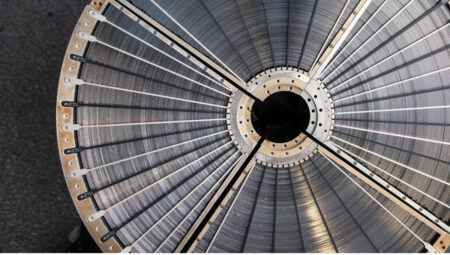“If you do something new or innovative, expect trouble. But think critically about it because if you’re wrong, you want to be the first one to know that.” – Eugene Parker
Eugene Parker, a physicist who first witnessed the launch of a spacecraft bearing his name and hypothesized the presence of solar wind, almost a decade after being diagnosed with Parkinson’s disease, died quietly at a retirement community in Chicago on Tuesday, according to his son, Eric Parker.
Parker was a trailblazer in the subject of Heliophysics, which studies the sun and other stars. He is well known for his idea of the solar wind, a supersonic jet of particles of the sun’s surface, which he proposed in 1958. Parker’s identity as a teacher and mentor was shaped by the event.
Parker was born in Houghton, Michigan, in 1927. He earned his PhD in physics from Michigan State University and worked as an assistant professor at the University of Utah before joining the University of Chicago in 1955.
In 2018, Parker reflected on how his solar wind idea was extensively panned and even derided when it was first published. In 1962, a NASA spacecraft mission to Venus validated his theory and the solar wind’s effects on the solar system, including periodic communications system outages on Earth.
In a statement, NASA Administrator Bill Nelson stated, “Dr. Eugene Parker’s contributions to science and understanding how our cosmos works impact so much of what we do here at NASA.” “The many present and future NASA missions that build on Dr. Parker’s work will carry on his legacy.”
What is Solar Wind, exactly?
The solar wind is a stream of charged particles discharged from the Sun’s corona or upper atmosphere. Electrons, protons, and alpha particles with kinetic energy make up the majority of this plasma. Other incoming cosmic rays interact with planetary atmospheres as a result of the solar wind. Furthermore, planets with a weak or non-existent magnetosphere are prone to solar wind atmospheric stripping.
Parker Solar Probe of NASA
The Parker Solar Probe travels through the Sun’s atmosphere, closer to the surface than any spacecraft before it, enduring extreme heat and radiation in order to offer humanity the most detailed measurements of a star ever made.
Parker Solar Probe, which will fly into the Sun’s outer atmosphere, known as the corona, for the first time, will use a combination of in situ measurements and images to transform our understanding of the corona and increase our knowledge of the solar wind’s genesis and evolution. It also aids our ability to predict changes in the Earth’s space environment that affect life and technology on the planet.
Mr Parker’s scientific efforts were recognized in 2018 when NASA named a spacecraft after him. The successful launch of the Parker Solar Probe, which Parker attended at the age of 91, has since delivered unparalleled close images of the sun.
Parker “was a visionary,” said Dr Nicola Fox, director of NASA’s Heliophysics Division “She also expressed her regret at not being able to share the newest results from the probe’s journeys with him.
“Dr Parker’s findings and legacy will carry on in perpetuity, even if he is no longer with us,” “According to Fox.
Published By : VATSAL KOTHA
Edited By : KRITIKA KASHYAP













